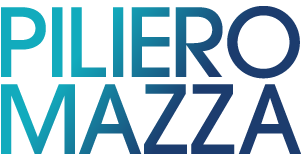On September 26, 2025, the Federal Acquisition Regulatory (FAR) Council released the FAR Part 19 model deviation text, significantly reorganizing the Part’s overall structure. The updated FAR Part 19 not only streamlines the layout to align with the acquisition lifecycle but also revises key rules governing set-aside contracts awarded under various small business programs. One of the most notable areas affected is the 8(a) Business Development Program. This blog provides a more detailed analysis of recent changes to the FAR as it relates to 8(a) contracting, expanding on the initial overview from our October 3rd client alert.
Overview of Key Changes
As discussed in our earlier alert, the revised FAR Part 19 introduces two major changes to contracting under the Small Business Administration’s (SBA) 8(a) Program:
- Follow-On Flexibility. Contracting officers now have authority—without SBA approval—to release follow-on 8(a) contracts from the 8(a) Program if the follow-on is set aside under the HUBZone, SDVOSB, or WOSB programs.
- Emphasis on Competition. The new Part 19 prioritizes competition over sole-source awards for 8(a) contracts, especially through government-wide acquisition contracts (GWACs).
Aside from these two significant updates, the remaining 8(a) regulations remain largely unchanged.
New Rules for 8(a) Follow-Ons: Opening the Door to Other Set-Aside Programs
The FAR Council’s revisions effectively dismantle the longstanding “Once 8(a), Always 8(a)” rule. Historically, once a requirement was accepted into the 8(a) Program, any follow-on contract had to remain in the 8(a) Program unless (1) the SBA approved its release or (2) a mandatory source requirement under FAR Part 8 applied. In either case, the contracting officer was required to notify the SBA.
Under the old FAR Part 19, the SBA’s significant oversight role was reinforced in multiple provisions:
- The introductory policy language explicitly stated that a requirement accepted by the SBA under the 8(a) Program “must remain in the 8(a) Program unless the SBA agrees to its release.”
- Each Subpart related to other socioeconomic programs (HUBZone, , WOSB) reiterated this restriction, clarifying that those Subparts did not apply to requirements performed by 8(a) participants or accepted into the 8(a) Program—unless the SBA consented.
- For sole-source awards, contracting officers were prohibited from considering such awards where a requirement was being performed by an 8(a) firm or accepted into the 8(a) Program.
All of these provisions have now been removed.
What Has Changed and What Remains the Same
The new regulation retains the two previous exceptions and adds a third. Under the revised FAR Part 19, an 8(a) follow-on contract may now be competed outside the 8(a) Program if the follow-on will be set aside under the HUBZone, SDVOSB, or WOSB programs.
This new exception limits the SBA’s authority by removing its control over certain follow-on contract decisions. Instead, the new provision provides contracting officers with greater discretion on how best to meet the agency’s needs and contracting goals. Additionally, though removed from the new FAR Part 19, this change seems to signify the FAR Council’s desire to embrace a policy that no one small business contracting program is favored over another.
Notably, the requirement to provide written notice to SBA was also eliminated. As a result, when a contracting officer determines that a mandatory source applies or intends to issue the follow-on contract under one of the permitted set-aside programs, the contracting officer is no longer required to obtain SBA approval or provide notice to the SBA.
However, in cases where there is no mandatory source and the follow-on contract will not be set-aside for HUBZone small businesses, SDVOSBs, or WOSBs, SBA approval is still required. This process remains unchanged. The contracting officer must submit a written request to SBA that includes:
- whether the agency achieved its small, disadvantaged business goal;
- whether the agency achieved its HUBZone, SDVOSB, WOSB, or small business goal(s); and
- whether the requirement is critical to the business development of the current 8(a) contractor.
Note: These 8(a) follow-on restrictions do not apply to task or delivery orders issued under the 8(a) Program when the base contract itself was not accepted into the 8(a) Program.
Encouraging Competition: Emphasis on GWACs
The second major reform in the new FAR Part 19 is a clear shift toward competition over sole-sourcing through government-wide contracting vehicles.
The new FAR 19.108 establishes that contracting officers must first attempt to conduct competition for procurements below the competitive thresholds—$8.5 Million for manufacturing and $5.5 Million for other industries (effective October 1, 2025)—by competing 8(a) orders using GWACs. Sole-source awards may only then be pursued when competition is not feasible.
This change aligns with the Administration’s broader goal of consolidating contracting across agencies to achieve faster, more efficient, and more cost-effective acquisitions.
Implementation and Next Steps
The FAR Council’s departure from “Once 8(a), Always 8(a)” and the new emphasis on competitive 8(a) orders currently conflict with SBA’s existing regulations. However, SBA is expected to revise its regulations to align with the new FAR framework. Until then, implementation details remain uncertain.
It’s also important to note that the new FAR’s model deviation text is not yet codified. Agencies may choose to adopt it by issuing deviations, and several already have for other parts. Currently, only the General Services Administration, Securities and Exchange Commission, and Commodity Futures Trading Commission have issued deviations adopting the new language of FAR Part 19, and more are likely to follow.
Takeaways
- Follow-On Flexibility. Follow-on 8(a) contracts can now transition into other socioeconomic set-asides—HUBZone, SDVOSB, or WOSB—without SBA approval, expanding contracting opportunities across programs.
- Increased Competition. Contracting officers must prioritize competition for 8(a) procurements below the competitive thresholds, particularly through GWACs.
- Limited Application (for Now). The new framework currently applies only where agencies adopt deviations.
- Public Feedback Invited. The FAR Council is accepting feedback on all revised FAR Parts, including Part 19, through November 3, 2025, at 4:30 p.m. Eastern Time. While individual responses will not be issued, all comments will be considered in developing the final rule.
- Ongoing Analysis. PilieroMazza will continue to monitor and analyze these changes as the rulemaking progresses. In our prior alert, we referenced Sam Finnerty’s blog, which explores the new FAR Part 19 recertification requirements in detail. Stay tuned for additional analyses as more guidance and community feedback become available.
If you have questions about SBA’s changes to FAR Part 19, how it may impact your business, or would like assistance with preparing comments to the revised FAR, please contact Tony Franco, Krissy Crallé, or another member of PilieroMazza’s Government Contracts Group.



